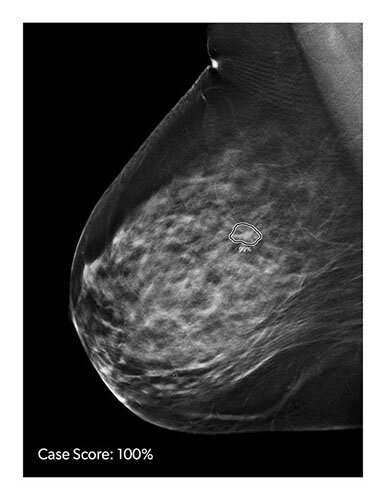Diagnostic Imaging May Increase Testicular Cancer Risk
|
By MedImaging International staff writers Posted on 23 Nov 2020 |
Repeated exposures to diagnostic imaging, such as X-rays and computerized tomography (CT) scans, may increase the risk of testicular germ cell tumor (TGCT), according to a new study.
Researchers at the University of Pennsylvania (Penn; Philadelphia, USA), the Lee Moffitt Cancer Center and Research Institute (Tampa, FL, USA), and other institutions conducted a case-control study of 315 men with and 931 men without TGCT, recruited from hospital- and population-based settings. Study participants reported on exposures to x-ray or CT below the waist and lower gastrointestinal (GI) series or barium enema, which include a series of x-rays of the colon. Adjusted risk of TGCT was then calculated according to number of exposures and age at first exposure.
The results revealed that after adjustment for known risks of testicular cancer, including cryptorchidism and family history, race, age, and other factors, there was a statistically significant increased risk (59%) of TGCT among those reporting at least three exposures to X-ray, including a colon X-ray, and CT below the waist, compared to men with no such exposure. TGCT risk was also elevated for those exposed to diagnostic radiation during the first decade of their life, compared to those first exposed at age 18 years or older. The study was published on November 11, 2020, in PLOS One.
“The steady rise in TGCT cases over the past three or four decades suggests there is an environmental exposure risk at play, but no definitive risk factor has ever been identified,” said senior author Professor Katherine Nathanson, MD, of Penn. “Our data suggests that the increased use of diagnostic radiation below the waist in men over that same time may contribute to the increase in incidence. If our results are validated, efforts to reduce medically unnecessary and avoidable testicular exposure should be considered.”
TGCT is the most common cancer in white men aged 15–44 years of age, and incidence has increased rapidly in recent decades, particularly among those of European ancestry. Although multiple hypotheses investigating the impact of environmental exposures on risk of TGCT have been proposed, few were found to be robustly associated with the increasing incidence. One factor contributing to the rise in TGCT incidence may be the 20-fold increased use of diagnostic radiation in recent decades.
Related Links:
University of Pennsylvania
Lee Moffitt Cancer Center and Research Institute
Researchers at the University of Pennsylvania (Penn; Philadelphia, USA), the Lee Moffitt Cancer Center and Research Institute (Tampa, FL, USA), and other institutions conducted a case-control study of 315 men with and 931 men without TGCT, recruited from hospital- and population-based settings. Study participants reported on exposures to x-ray or CT below the waist and lower gastrointestinal (GI) series or barium enema, which include a series of x-rays of the colon. Adjusted risk of TGCT was then calculated according to number of exposures and age at first exposure.
The results revealed that after adjustment for known risks of testicular cancer, including cryptorchidism and family history, race, age, and other factors, there was a statistically significant increased risk (59%) of TGCT among those reporting at least three exposures to X-ray, including a colon X-ray, and CT below the waist, compared to men with no such exposure. TGCT risk was also elevated for those exposed to diagnostic radiation during the first decade of their life, compared to those first exposed at age 18 years or older. The study was published on November 11, 2020, in PLOS One.
“The steady rise in TGCT cases over the past three or four decades suggests there is an environmental exposure risk at play, but no definitive risk factor has ever been identified,” said senior author Professor Katherine Nathanson, MD, of Penn. “Our data suggests that the increased use of diagnostic radiation below the waist in men over that same time may contribute to the increase in incidence. If our results are validated, efforts to reduce medically unnecessary and avoidable testicular exposure should be considered.”
TGCT is the most common cancer in white men aged 15–44 years of age, and incidence has increased rapidly in recent decades, particularly among those of European ancestry. Although multiple hypotheses investigating the impact of environmental exposures on risk of TGCT have been proposed, few were found to be robustly associated with the increasing incidence. One factor contributing to the rise in TGCT incidence may be the 20-fold increased use of diagnostic radiation in recent decades.
Related Links:
University of Pennsylvania
Lee Moffitt Cancer Center and Research Institute
Latest Radiography News
- Novel Breast Imaging System Proves As Effective As Mammography
- AI Assistance Improves Breast-Cancer Screening by Reducing False Positives
- AI Could Boost Clinical Adoption of Chest DDR
- 3D Mammography Almost Halves Breast Cancer Incidence between Two Screening Tests
- AI Model Predicts 5-Year Breast Cancer Risk from Mammograms
- Deep Learning Framework Detects Fractures in X-Ray Images With 99% Accuracy
- Direct AI-Based Medical X-Ray Imaging System a Paradigm-Shift from Conventional DR and CT
- Chest X-Ray AI Solution Automatically Identifies, Categorizes and Highlights Suspicious Areas
- AI Diagnoses Wrist Fractures As Well As Radiologists
- Annual Mammography Beginning At 40 Cuts Breast Cancer Mortality By 42%
- 3D Human GPS Powered By Light Paves Way for Radiation-Free Minimally-Invasive Surgery
- Novel AI Technology to Revolutionize Cancer Detection in Dense Breasts
- AI Solution Provides Radiologists with 'Second Pair' Of Eyes to Detect Breast Cancers
- AI Helps General Radiologists Achieve Specialist-Level Performance in Interpreting Mammograms
- Novel Imaging Technique Could Transform Breast Cancer Detection
- Computer Program Combines AI and Heat-Imaging Technology for Early Breast Cancer Detection
Channels
MRI
view channel
PET/MRI Improves Diagnostic Accuracy for Prostate Cancer Patients
The Prostate Imaging Reporting and Data System (PI-RADS) is a five-point scale to assess potential prostate cancer in MR images. PI-RADS category 3 which offers an unclear suggestion of clinically significant... Read more
Next Generation MR-Guided Focused Ultrasound Ushers In Future of Incisionless Neurosurgery
Essential tremor, often called familial, idiopathic, or benign tremor, leads to uncontrollable shaking that significantly affects a person’s life. When traditional medications do not alleviate symptoms,... Read more
Two-Part MRI Scan Detects Prostate Cancer More Quickly without Compromising Diagnostic Quality
Prostate cancer ranks as the most prevalent cancer among men. Over the last decade, the introduction of MRI scans has significantly transformed the diagnosis process, marking the most substantial advancement... Read moreUltrasound
view channel
Deep Learning Advances Super-Resolution Ultrasound Imaging
Ultrasound localization microscopy (ULM) is an advanced imaging technique that offers high-resolution visualization of microvascular structures. It employs microbubbles, FDA-approved contrast agents, injected... Read more
Novel Ultrasound-Launched Targeted Nanoparticle Eliminates Biofilm and Bacterial Infection
Biofilms, formed by bacteria aggregating into dense communities for protection against harsh environmental conditions, are a significant contributor to various infectious diseases. Biofilms frequently... Read moreNuclear Medicine
view channel
New SPECT/CT Technique Could Change Imaging Practices and Increase Patient Access
The development of lead-212 (212Pb)-PSMA–based targeted alpha therapy (TAT) is garnering significant interest in treating patients with metastatic castration-resistant prostate cancer. The imaging of 212Pb,... Read moreNew Radiotheranostic System Detects and Treats Ovarian Cancer Noninvasively
Ovarian cancer is the most lethal gynecological cancer, with less than a 30% five-year survival rate for those diagnosed in late stages. Despite surgery and platinum-based chemotherapy being the standard... Read more
AI System Automatically and Reliably Detects Cardiac Amyloidosis Using Scintigraphy Imaging
Cardiac amyloidosis, a condition characterized by the buildup of abnormal protein deposits (amyloids) in the heart muscle, severely affects heart function and can lead to heart failure or death without... Read moreGeneral/Advanced Imaging
view channel
New AI Method Captures Uncertainty in Medical Images
In the field of biomedicine, segmentation is the process of annotating pixels from an important structure in medical images, such as organs or cells. Artificial Intelligence (AI) models are utilized to... Read more.jpg)
CT Coronary Angiography Reduces Need for Invasive Tests to Diagnose Coronary Artery Disease
Coronary artery disease (CAD), one of the leading causes of death worldwide, involves the narrowing of coronary arteries due to atherosclerosis, resulting in insufficient blood flow to the heart muscle.... Read more
Novel Blood Test Could Reduce Need for PET Imaging of Patients with Alzheimer’s
Alzheimer's disease (AD), a condition marked by cognitive decline and the presence of beta-amyloid (Aβ) plaques and neurofibrillary tangles in the brain, poses diagnostic challenges. Amyloid positron emission... Read more.jpg)
CT-Based Deep Learning Algorithm Accurately Differentiates Benign From Malignant Vertebral Fractures
The rise in the aging population is expected to result in a corresponding increase in the prevalence of vertebral fractures which can cause back pain or neurologic compromise, leading to impaired function... Read moreImaging IT
view channel
New Google Cloud Medical Imaging Suite Makes Imaging Healthcare Data More Accessible
Medical imaging is a critical tool used to diagnose patients, and there are billions of medical images scanned globally each year. Imaging data accounts for about 90% of all healthcare data1 and, until... Read more
Global AI in Medical Diagnostics Market to Be Driven by Demand for Image Recognition in Radiology
The global artificial intelligence (AI) in medical diagnostics market is expanding with early disease detection being one of its key applications and image recognition becoming a compelling consumer proposition... Read moreIndustry News
view channel
Bayer and Google Partner on New AI Product for Radiologists
Medical imaging data comprises around 90% of all healthcare data, and it is a highly complex and rich clinical data modality and serves as a vital tool for diagnosing patients. Each year, billions of medical... Read more



















